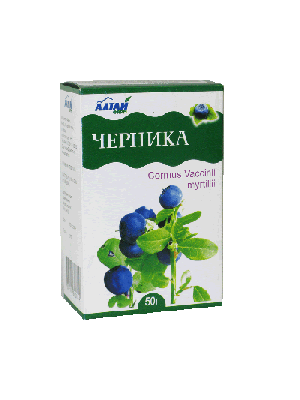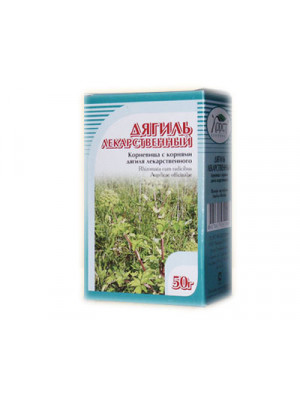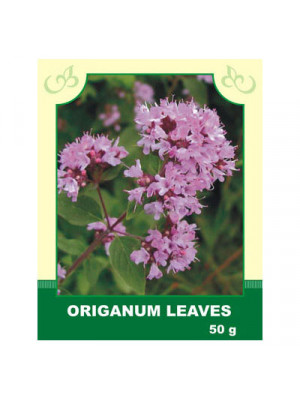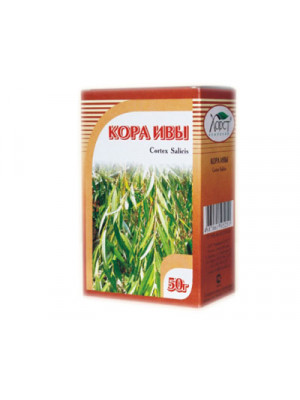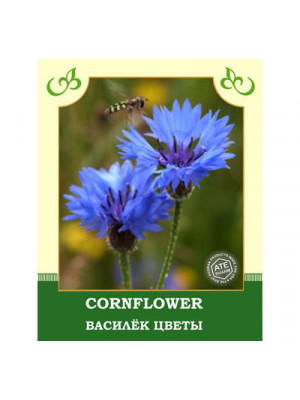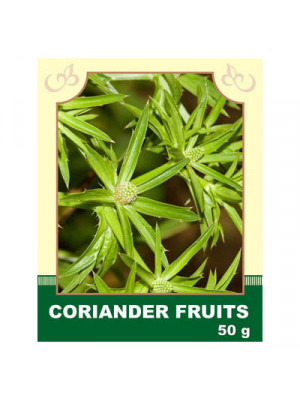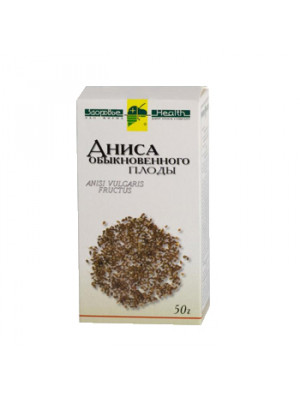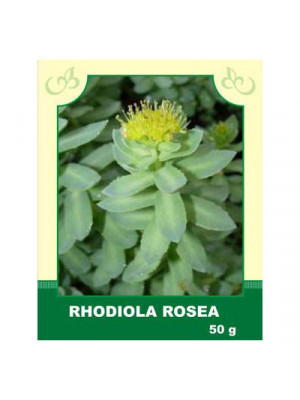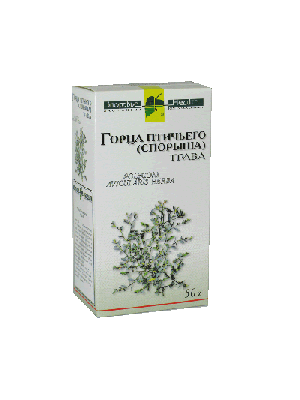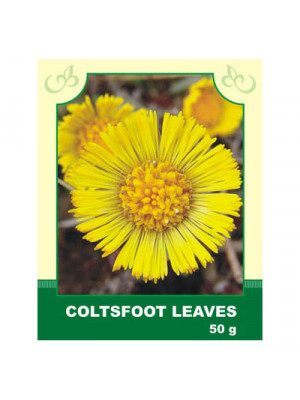Herbs
Internal use: Taken for gastric and intestinal catarrhs with reduced acidity of gastric juice, stomach upset, diarrhea, and chronic constipation, spasms and pains in the stomach and intestines, kidney and bladder stones, gout, and rheumatism. Particularly effective for diarrhea in children and acute enterocolitis in adults. Bilberry berries enhance sharpness of vision, provide an increase in the field of vision, and reduce eye fatigue from prolonged work under artificial light.
Method of application and dosage: 3-4 teaspoons of berries are poured with 400 ml of boiling water, infused for 2-3 hours, and taken in 1/4 cup 5-6 times a day.
External use: Infusion is used for enemas in case of hemorrhoidal bleeding, eczema, pimples, and burns. 1-2 teaspoons of berries are poured with 200 ml of boiling water, infused for 15 minutes, strained, squeezed out, and used for rinsing, lotions, and enemas.
Contraindications: Individual intolerance.
$6.99- Angelica has a tonic effect on the cardiovascular and central nervous system, increases the secretion of bile and pancreatic juice. Angelica is used to treat gout, rheumatism and low back pain, use rubbing alcohol for tinctures is recommended for gallstone disease, kidney disease.$6.99
Description. Oregano herb contains volatile oils, tannins, ascorbic acid. Oregano is usually thought of as a culinary herb, but it has been used medicinally for thousands of years. Oregano is a powerful antiseptic; it also has calming, diuretic, cholagogic properties. Use. Oregano is very useful for indigestion, bloating, flatulence, coughs, urinary problems, bronchial problems, headaches, swollen glands, and to promote menstruation. It is also used to relieve fevers, diarrhea, vomiting, and jaundice. Unsweetened tea can be used as a gargle or mouthwash. Externally, Oregano leaves can be pounded into a paste. This paste can then be used for pain from rheumatism, swelling, itching, aching muscles, and sores. For tired joints and muscles, put a handful of Oregano leaves in a coffee filter, mesh bag, or cheesecloth bag and run steaming bath water over it. Allow it to steep in the tub with you as you relax in the warm, fragrant water.
Attention! Do not take oregano while being pregnant.
Attention! Before using any herbal products, make sure that you have full knowledge of how the herb works and any adverse reaction it may cause.$6.99- Bark is used to ease pain and reduce inflammation, and there is good evidence that it is effective as an analgesic and anti-inflammatory. Due to its astrigent action willow bark is used for diarrhea and gastro-intestinal inflammations.$6.99
Internally, the infusion is used for colds, cough, constipation, stomach pains, kidney and bladder diseases, as a diaphoretic, and as a remedy for palpitations and headaches.
Method of application and dosage: Infuse 1 teaspoon of violet for 1 hour in closed dishes in 1 glass of boiling water, cool, strain. Take 1/2 cup 3 times a day 15-20 minutes before meals.
Externally, the infusion of flower petals is used as eye drops and compresses for certain eye diseases. Crushed plant material is applied to wounds to promote healing.
Contraindications: Individual intolerance. The plant is weakly toxic, so caution should be exercised with dosage.
$6.99Internally, the infusion improves digestion and is used for gastritis, stomach ulcers, and duodenal ulcers. Widely used in cooking as a spice and for preserving food.
Method of application and dosage: Steep 1 tablespoon in a cup of boiling water or hot milk for 1 hour, strain, sweeten to taste. Take 1/4 cup 4 times a day, hot.
Contraindications: individual intolerance.
$6.99Internally, it is an effective remedy for insufficient milk during lactation. It has antiseptic and expectorant effects and can be used for bronchitis, wet cough, and other respiratory tract pathologies. Additionally, it helps normalize liver function. It is applied to diseases of the bladder, urinary tract, and can help get rid of kidney stones.
Method of application and dosage: 1 teaspoon of dry seeds is poured into a cup and filled with boiling water. The tea is infused for 10 minutes, then strained and consumed half an hour after eating. You can have 2-3 cups per day.
External use: used for inhalations.
Contraindications: digestive system problems, pregnancy, individual intolerance.
$7.99Internally, it is taken as a means of stimulating the central nervous system, for increased fatigue, during increased mental stress, in depressive states in alcoholism patients, to increase endurance on long hikes, for hypotension, insomnia, impotence, and sexual weakness.
Method of application and dosage: Prepare a tincture on 40% alcohol in a ratio of 1:5, infuse in a dark place for 3-4 weeks, strain, and take 15 drops 3 times a day 15-20 minutes before meals. The infusion is prepared by pouring 10 g of raw material with 200 ml of boiling water, infusing for 4 hours, straining, bringing to the original volume with boiling water, and taking 1/2 cup 2-3 times a day.
Contraindications: individual intolerance, with sharply expressed excitability, hypertensive crisis, febrile conditions. Overdose is not allowed. It is not recommended to take it at night or late in the evening.
$6.99Internally, it is taken for uterine bleeding after abortion and in the postpartum period, for uterine fibroids, as well as for all internal bleeding; for diseases of the liver, kidneys, bladder, and stomach; for all lung diseases. Decoctions and infusions accelerate wound healing by increasing blood clotting, reduce the bleeding of mucous membranes, eliminate toxins and various harmful substances from the body, and enhance immunity.
Method of application and dosage: 3 tablespoons of raw material are poured with 200 ml of boiling water, infused for 45 minutes, strained, squeezing out the remaining plant material. The infusion is brought to the original volume with boiling water. Take 1/3 cup 2-3 times a day before meals.
Externally, in the form of baths, it is used for the prolapse of hemorrhoidal nodes and the rectum.
Contraindications: Individual intolerance.
$6.99Folk remedy for strengthening hair and combating dandruff:
A decoction of coltsfoot mixed with nettle is an effective remedy for strengthening hair and combating abundant dandruff.
Internal use:
Take it internally for the following conditions: bronchial asthma, bronchitis, pleurisy, pneumonia, runny nose, flu, inflammatory processes in the oral cavity, toothache, arthritis, myositis, allergies, epilepsy, malaria, edema, shortness of breath, gastrointestinal diseases, peptic ulcer, gastritis, heart diseases, bladder, and kidney diseases.
Preparation and dosage: Pour 5 g of raw materials with 200 ml of boiling water, boil for 10 minutes, infuse at room temperature for 10-15 minutes, then strain. Take 1 tablespoon 3-4 times a day before meals.
External use:
Externally, the decoction is used for accelerating the ripening of boils, for chronic wounds and ulcers. It is also used for gargling in case of angina and for douching in inflammatory diseases of the female genital organs accompanied by discharge. For external use, pour 50 g of raw materials with 1 liter of boiling water, boil for 5 minutes, strain, and apply externally.
Contraindications: Individual intolerance.
$6.99


